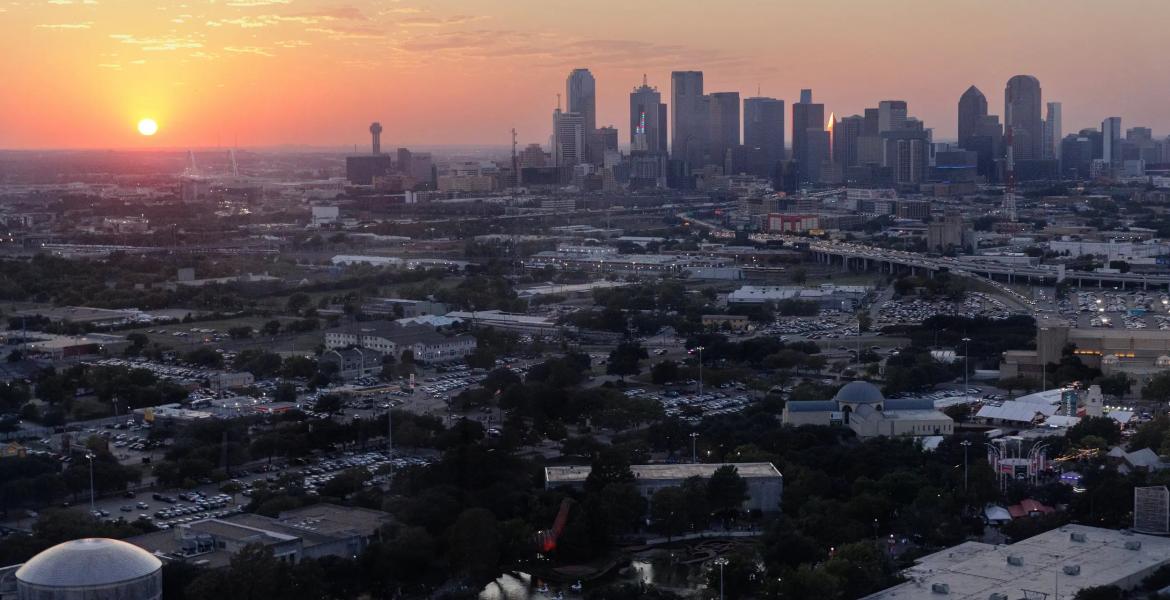AUSTIN, TX -- For state Rep. Lyle Larson, Hurricane Harvey was not only a tragedy but also a wasted opportunity. The San Antonio Republican, who chairs the House Natural Resources Committee, estimates that the amount of rain the storm dropped on the state could meet all its water needs — household, agricultural and otherwise — for at least eight years.
Instead, he said, those 34 trillion gallons ended up in a place where they didn't do a bit of good: the Gulf of Mexico.
"You could capture a good percentage of that water and start storing it," he said in a recent interview.
In Harvey's wake, Larson and other lawmakers are re-upping calls for state support of "aquifer storage and recovery" projects in which water is pumped into underground reservoirs and stored for future use. Larson authored several related bills earlier this year — most of them passed, but were later vetoed by Gov. Greg Abbott — that would've earmarked state funding for such projects and directed the state's water planning agency to study the best places to put them.
His counterpart in the Texas Senate, Charles Perry, appears just as passionate. At a hearing Monday, the Lubbock Republican also called Harvey a missed opportunity and said such projects could help the state better withstand the next, inevitable drought. Both he and Larson represent water-strapped districts.
The practice of capturing water and injecting it into underground aquifers is well established. According to the Texas Water Development Board, there are at least 175 operational aquifer storage and recovery projects throughout the United States, including three in Texas. (The oldest, in New Jersey, came online in 1969.) Several more projects are in the works throughout the state.
None of the projects in Texas involve capturing floodwater, however. And experts say the feasibility of corralling excessive stormwater, cleaning it and injecting it underground is yet to be determined. A study underway in Harris County is exploring what one hydrologist working on the project described as significant technical challenges to the process.
"We are just now seeing the tip of the iceberg as far as potential is concerned," said Bill Mullican, a water project consultant and former Water Development Board administrator. "If you look at the floods of May 2015, the [Tax Day] floods of 2016 and Harvey, what you've seen is a series of rather routine flood events that demonstrate that we have water that we are not capturing for later use during times of drought."
Generally speaking, supporters of aquifer storage and recovery say the approach has many advantages over traditional methods of water storage such as surface reservoirs. For one, water stored underground is not vulnerable to evaporation, which is a major problem in Texas. According to the Water Development Board, Texas on average loses about 40 percent of its water demand to evaporation each year — particularly in hot summer months.
Unlike a traditional surface reservoir, projects also don't require the acquisition of private land and generally are quicker to implement.
Mullican said the majority of land in Texas suitable for large reservoirs has greatly diminished since the heyday of reservoir construction in the 1960s and '70s.
"The amount of water that we have in storage in our [surface reservoirs and] lakes has been declining over the last 20 years because our population keeps getting bigger and we're not adding anything to our storage [capacity]," he said. He noted that the last major surface reservoir in Texas was built over two decades ago.
The Texas cities that have active aquifer storage and recovery projects are El Paso, Kerrville and San Antonio — Larson's hometown.
San Antonio's project, which came online in 2004 and cost more than $2 million, is perhaps the most well-known project. Its design is distinctive in that it doesn't inject surface water underground but transfers water from one aquifer to another that is better suited to store water for longer periods.
Kerrville's system is more traditional — it captures water from the Guadalupe River in cooler months when water demand dips. Meanwhile, El Paso's system uses treated wastewater.
Still, Larson said the state is some 20 years behind the rest of the country in taking advantage of aquifer storage and recovery technology.
“We've got our work cut out," he said, "because in the foreseeable future, you are going to see a pretty substantial drought, and all that water is going to be in the Gulf of Mexico.”
One of the bills Larson authored that Abbott later vetoed would have directed the Water Development Board to conduct a statewide assessment of potential sites for aquifer storage and recovery systems, especially in flood-prone areas — something Abbott said the agency already had the authority to do. Another bill would have earmarked state funds for aquifer storage and recovery projects. (Larson attributed the vetoes to "raw politics.")
Public entities have already been eligible to receive state assistance for such projects in form of low-interest loans. The city of Bryan, for example, secured an $18 million, multiyear loan last year for an aquifer storage and recovery project through the voter-approved SWIFT program.
In large part, an increased interest in aquifer storage and recovery projects is a result of one of Larson's past legislative successes, Mullican said. A 2015 bill eliminated some red tape for the permitting process by giving the Texas Commission on Environmental Quality the sole authority to sign off on underground storage projects. Previously, groundwater conservation districts also had to approve them.
While some regulatory hurdles are disappearing and more cities are looking to cache their water resources below ground, no one in the state has yet produced an operable system that is specifically designed to capture and store floodwater.
That's because dealing with water from excessive flood events brings unique challenges, said Gretchen Miller, a Texas A&M; University engineer who is studying the feasibility of such a project for Harris County
The biggest issue is with the quality of stormwater, she said. In general, water injected into aquifers has to meet very strict quality standards and stormwater frequently carries a dirty mix of clays and silts that could clog up water pumps designed to move it underground — not to mention other contaminants such as bacteria.
But water treatment takes time, and there are natural limits on how quickly water can be pumped into the ground, Miller said. If there is a rain event, water treatment may not be able to keep up with how quickly aboveground capture facilities fill up, she said.
Another limiting factor is the scale of rain events. Aquifers have finite storage space, so experts familiar with aquifer storage and recovery are quick to point out — and Larson agrees — that an event like Harvey dumped so much rain it would be impossible to capture and store it all.
One Harris County official who pushed for the study Miller is working on says he is “cautiously optimistic” of the feasibility of such a project.
“It really does have a lot of promise," said Harris County Commissioner Jack Cagle. “But it’s not something that can be implemented quickly."
Some caution that overzealous capture efforts could impact the environmental integrity of surface water supplies.
Kirk Winemiller, a professor of wildlife and fisheries studies at Texas A&M;, said he supports the capture and storage of water during massive rain events like Harvey, which dumped so much water on rivers, bayous and lakes that they escaped their banks. But he said after a smaller rain event it could be easy to harvest too much water, which would harm the health of plants and animals.
"Any water that you take out of the natural system is going to have some effect," Winemiller said.
Cagle said another concern for Harris County as it explores the possibility of creating a floodwater storage project of its own is how much it might cost.
Regardless, he said events like Harvey are a reminder to continue to explore creative solutions: "The balance point for whether something is feasible or not on an economic scale may be tiling towards, 'Let’s try it.'
This article originally appeared in The Texas Tribune HERE.
Subscribe to the LIVE! Daily
Required






Post a comment to this article here: